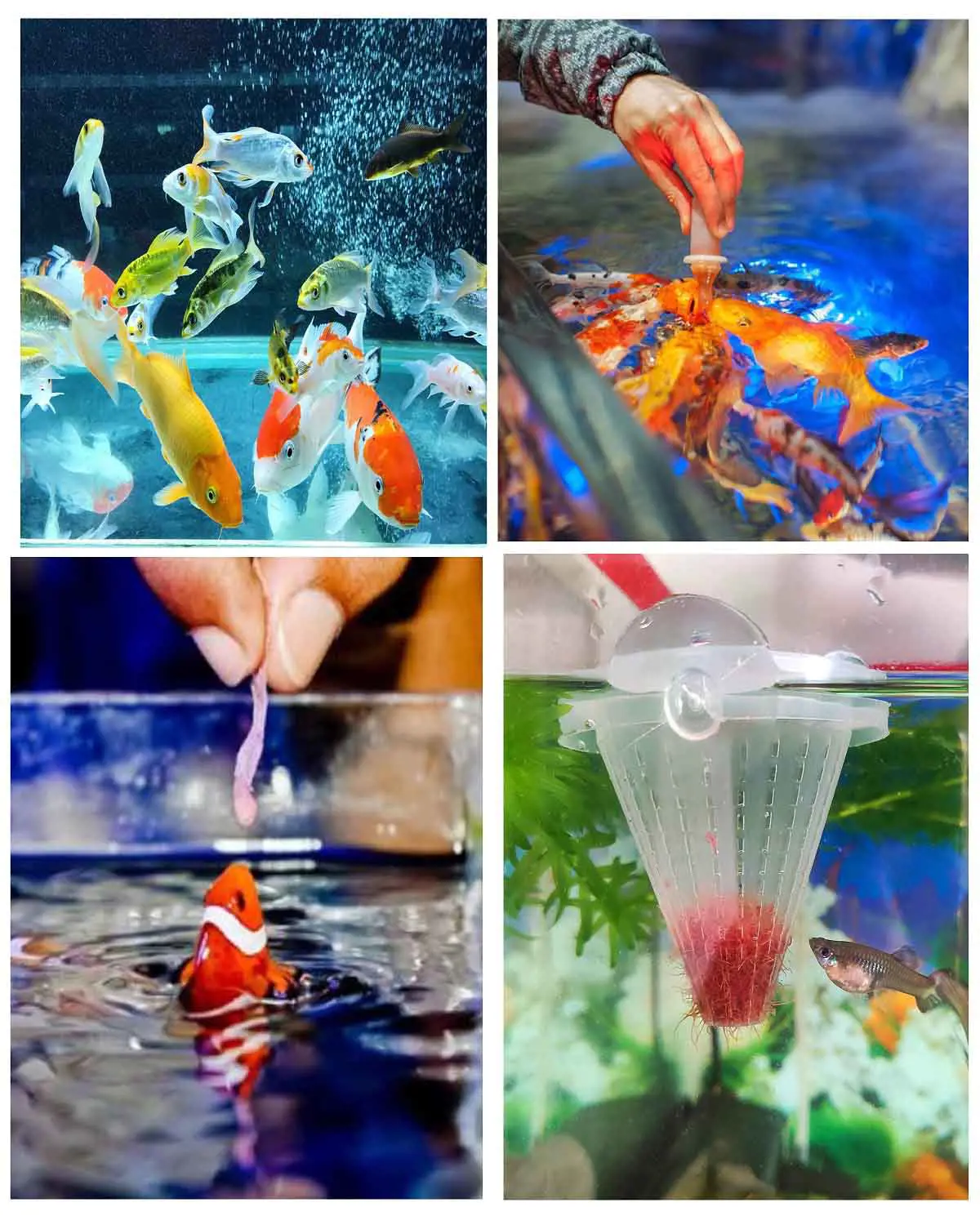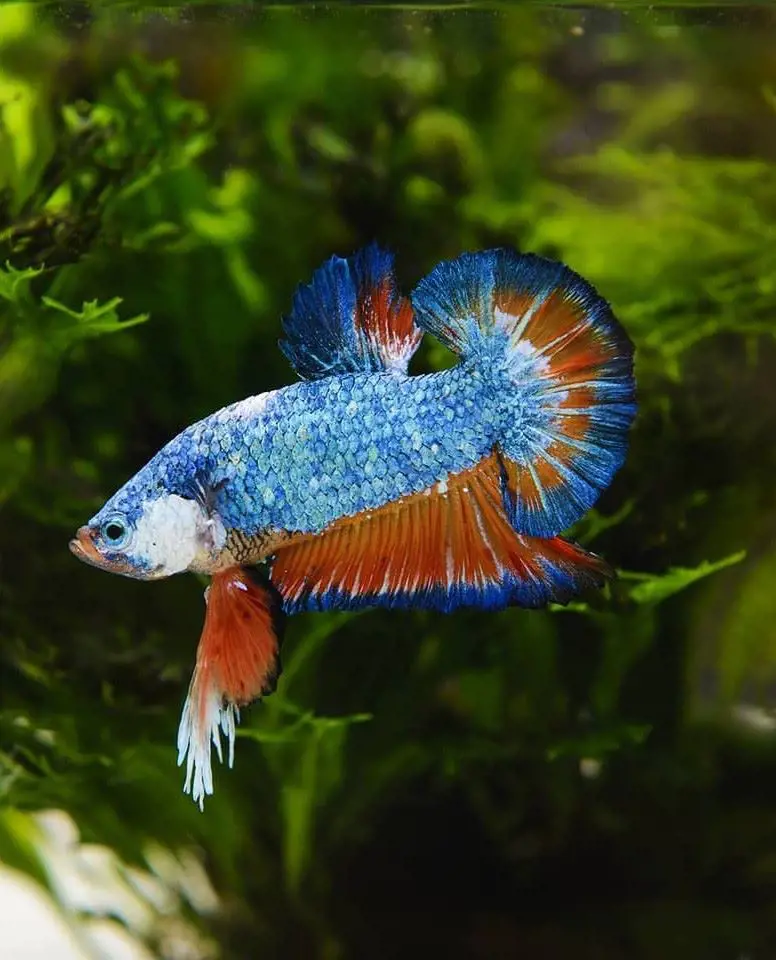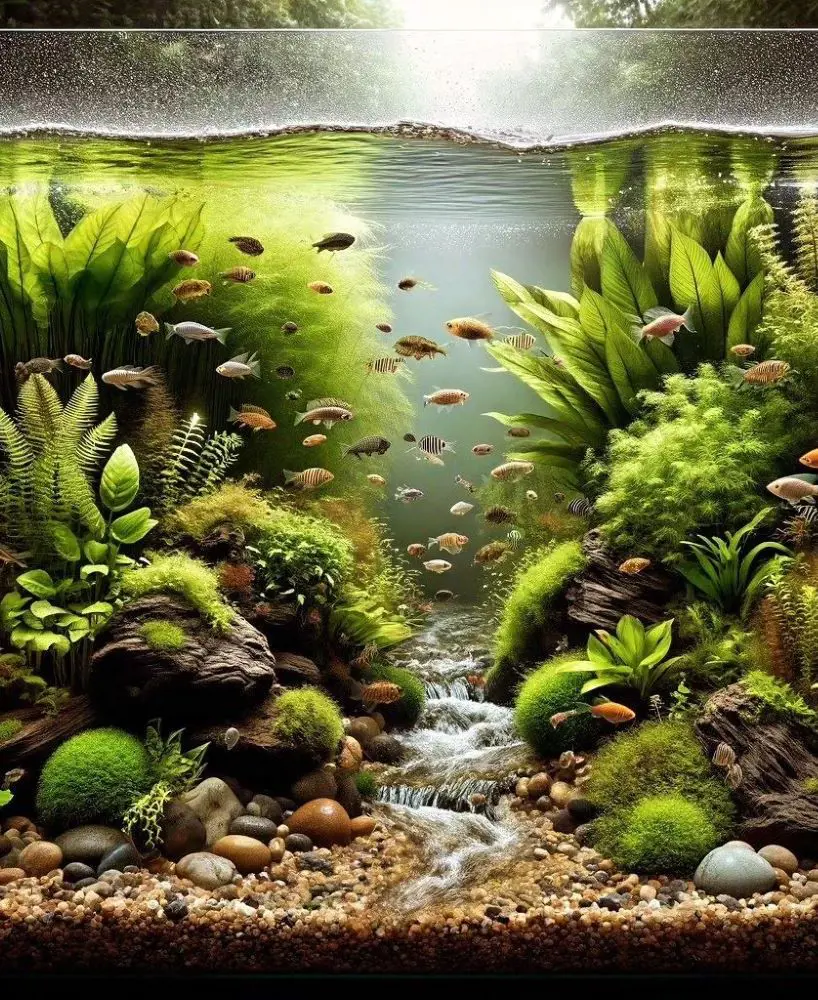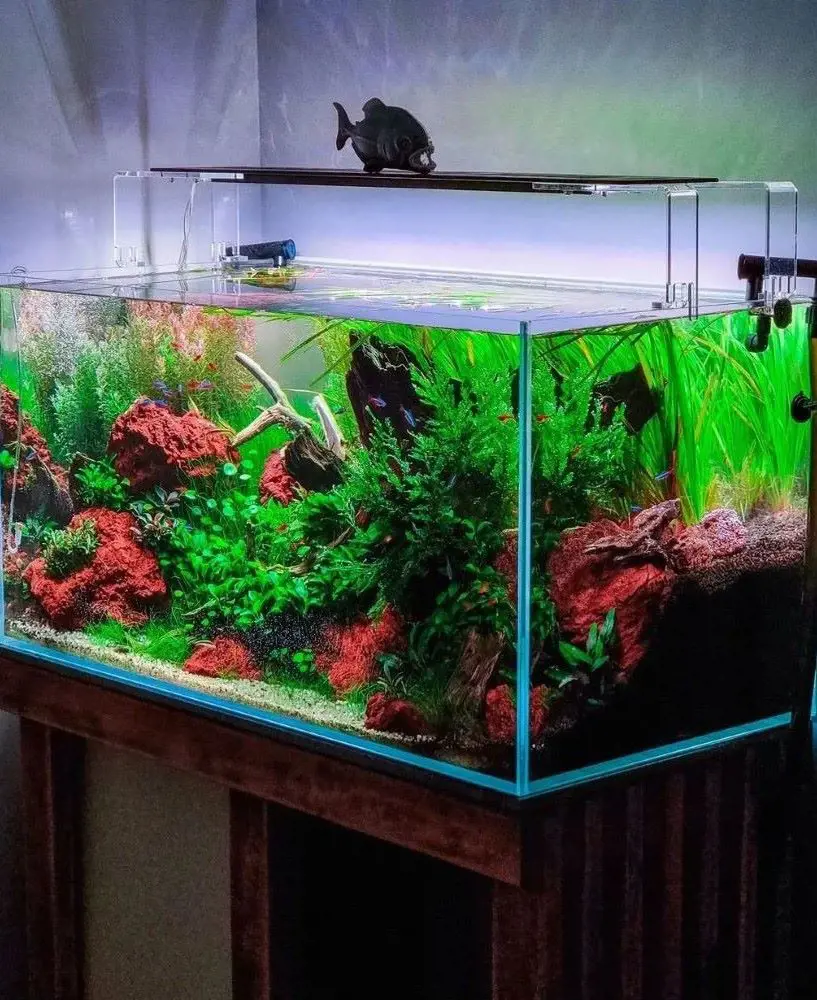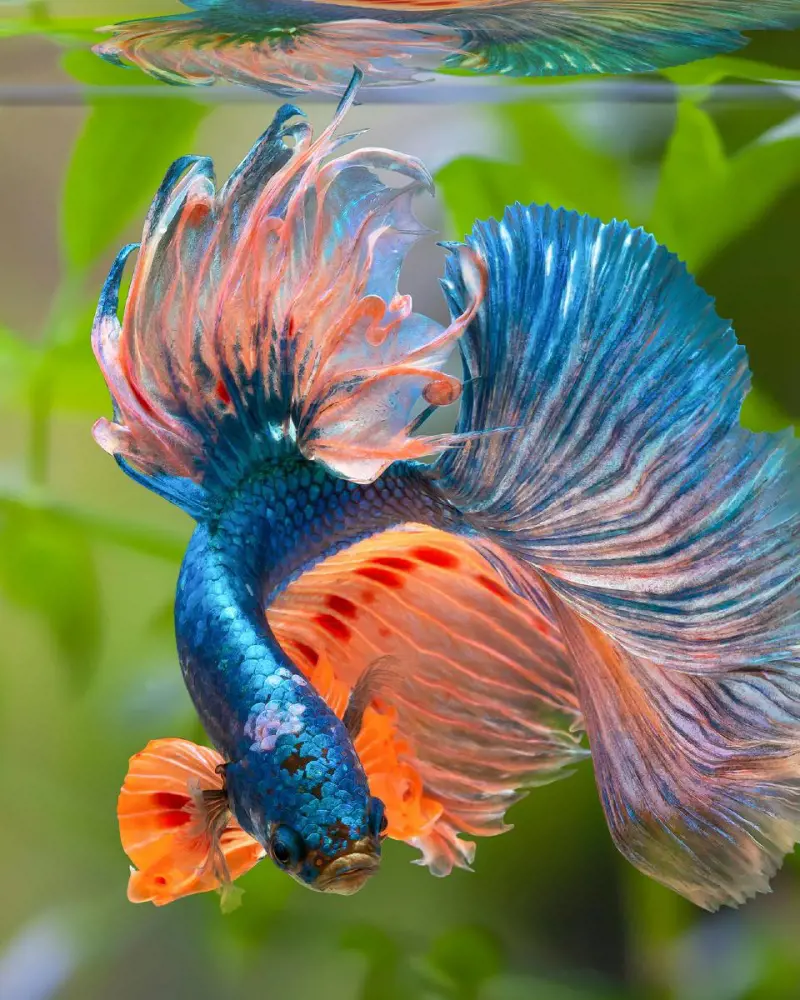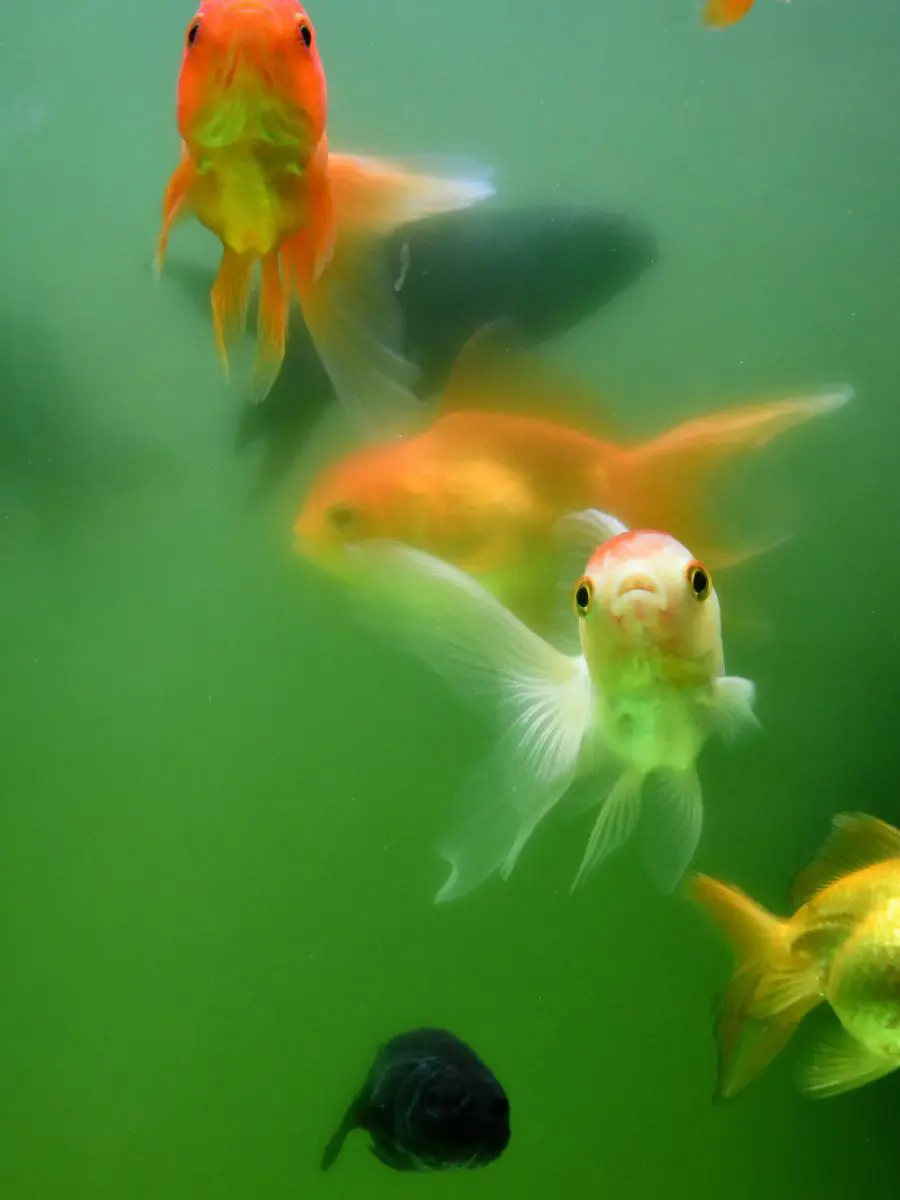Top 15 Nano Fish For Small Fish Tank
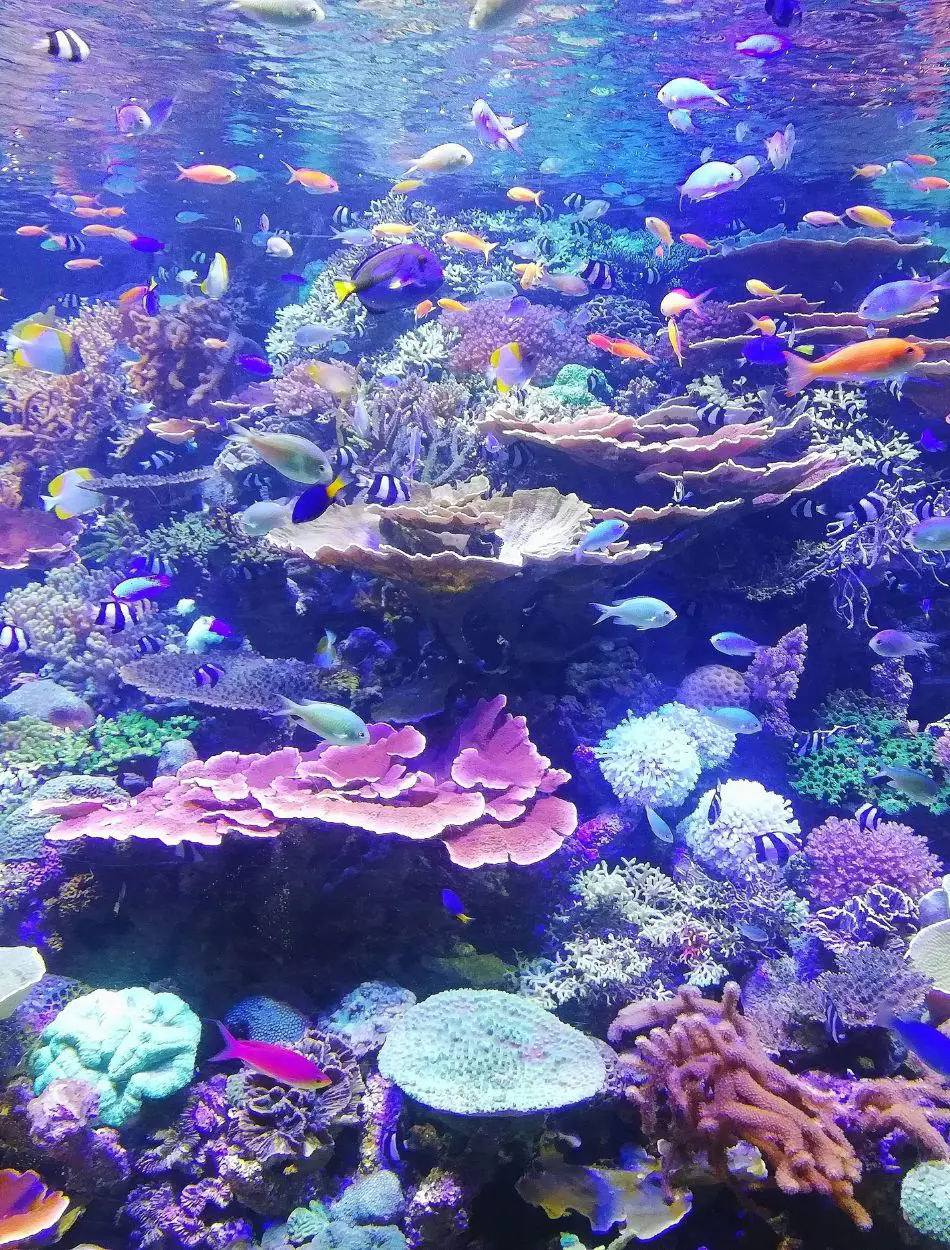
Nano Fish are tiny organisms that are created to perform specific functions in scientific and technological fields. Nano fish can be utilized for environmental monitoring, such as detecting pollutants or assessing water quality due to their high sensitivity to environmental changes in research.
They may also serve as model organisms in the study of biological processes and nanotechnology applications. Nano fish often incorporate nanoscale materials or devices, allowing precise interaction with their surroundings. This integration enables advanced observation and manipulation of biological and chemical phenomena at an unusual scale.
1. Harlequin Rasbora
Harlequin Rasbora is a small, popular freshwater fish known for its striking appearance and manageable size. It typically grows to about 1 to 1.4 inches in length.
Its small size and vibrant coloration, including a characteristic black triangle on the side and a reddish-orange body, make it a favored choice for nano aquariums and smaller tanks. These fish are native to Southeast Asia and are known for their peaceful nature. They thrive in groups and prefer well-planted environments with gentle water flow.
Due to their small size and adaptable nature, Harlequin Rasboras are ideal for nano and small community tanks, where they can coexist with other small, non-aggressive species. Their active, yet calm demeanor and bright coloration make them a favorite among aquarists looking to add a splash of color to their tanks.
2. Otocinclus
Otocinclus, commonly known as Otos, are small freshwater catfish highly valued in aquariums for their algae-eating abilities and peaceful nature. These fish typically reach sizes of 0.8 to 2 inches and are native to South America, where they inhabit slow-moving rivers and streams.
They are often recognized by their small, compact bodies and distinctive horizontal stripe patterns. They have a specialized mouth adapted for scraping algae off surfaces, and they thrive in well-maintained aquariums with plenty of hiding spots and a gentle water flow. These fish prefer to be kept in groups of at least six to ten individuals, which helps them feel secure and exhibit natural behaviors.
They are generally peaceful and compatible with other small, non-aggressive species.
3. Celestial Pearl Danio
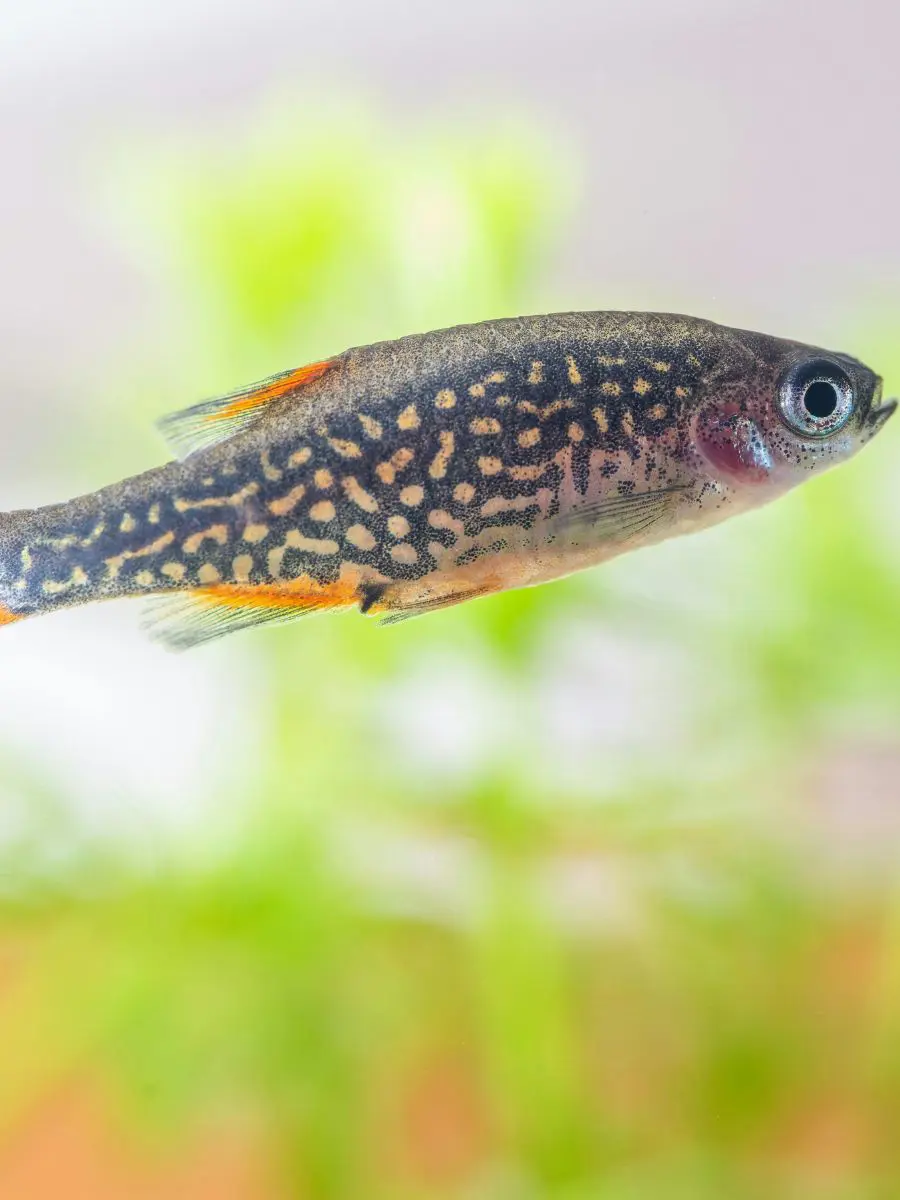
Celestial Pearl Danio, also known as the Galaxy Rasbora, is a strikingly beautiful freshwater fish native to Myanmar (Burma). This small species typically reaches around 1 to 1.4 inches in length, making it ideal for nano and small group aquariums.
Celestial Pearl Danios is a peaceful and social fish. They thrive in well-planted tanks with a gentle water flow, and they prefer slightly acidic water to neutral water with temperatures ranging from 72-78°F. Their diet consists of high-quality flakes, micro pellets, and occasional live or frozen foods like daphnia or microworms.
These fish are relatively hardy and adaptable, making them suitable for both beginner and experienced aquarists. Their striking appearance and calm demeanor make them a popular choice.
4. Pygmy Corydoras
Pygmy Corydoras is a small and charming freshwater catfish native to the Amazon Basin in South America. Scaling just 0.8 to 1.2 inches in length, it is one of the smallest species in the Corydoras genus.
These fish are set apart by their peaceful nature and sociable behavior. They thrive in groups of at least six to ten individuals, which helps them present natural instructional action and reduces stress. Their small size and bottom-dwelling habits make them excellent at hunting for leftover food and cleaning up uneaten particles.
Though they also benefit from a diet of high-quality flakes, micro pellets, and occasional live or frozen foods. Pygmy Corydoras prefers well-planted tanks with a soft substrate and gentle water flow.
5. Kuhli Loach
Kuhli Loach is a distinctive and fascinating freshwater fish native to Southeast Asia, distinctly Indonesia and Malaysia. Its elongated, slender body is adorned with alternating dark and light stripes, giving it a striking appearance reminiscent of a snake or eel.
Kuhli loaches are nocturnal and spend much of their time hiding in the base or among aquarium decorations, emerging mainly during the night to forage for food. They are calm, social fish that prefer to be kept in groups of at least three to six individuals, which helps them feel secure and exhibit natural behavior.
Kuhli Loach typically reaches 4 to 5 inches in length. These loaches thrive in well-planted tanks with a soft substrate, as they enjoy burrowing and sifting through the ground in search of food.
6. Panda Guppy
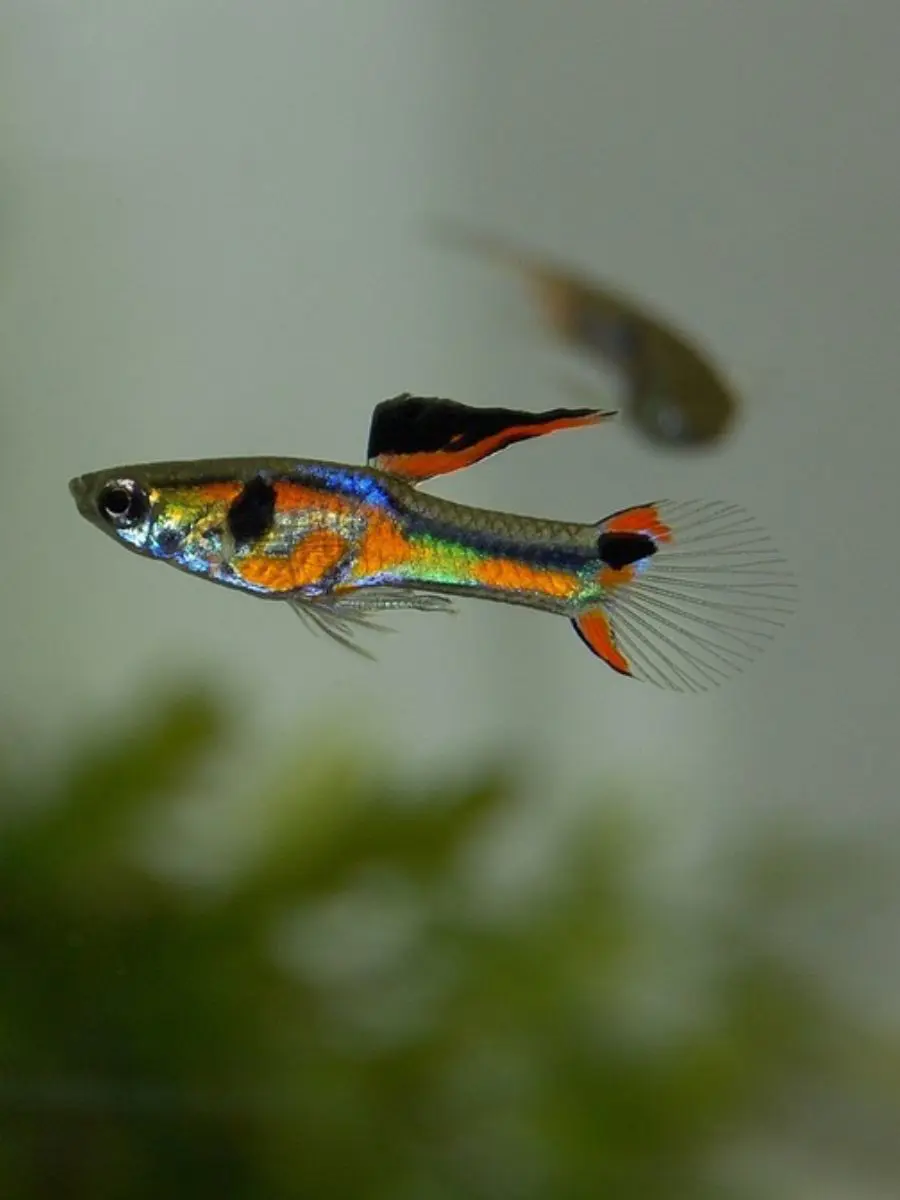
Panda Guppy is simply a vibrant and popular freshwater fish known for its striking appearance and lively behavior. It is named for its distinctive coloration, which typically features a black and white pattern reminiscent of a panda, although some variations may include other colors and patterns.
This small, livebearer fish is a variety of the most common guppy, reaching about 2 to 3 inches in length. Panda guppies are easy to care for and adaptable, making them a favorite among both novices and experienced aquarists. They thrive in a well-maintained aquarium with a temperature range of 72-82°F. They are active and social fish that should be kept in groups.
Their diet consists of high-quality flake food, live or frozen foods such as daphnia or brine shrimp, and occasional vegetable matter.
7. Ember Tetra
Ember Tetra is famed for its vibrant orange-red coloration, and this tetra is a favorite among aquarists looking to add a splash of color to their tanks. Adult tetras ordinarily reach about 1 inch in length, making them well-suited for nano and small company aquariums.
Ember Tetras is a pleasant and social fish, thriving best in schools of at least six to ten individuals. They prefer well-planted tanks with a soft ground, as they enjoy having plenty of hiding spots and gentle water flow. Their diet is omnivorous, comprising high-quality flake foods, micro pellets, and occasional live or frozen foods such as daphnia or baby brine shrimp.
Their small size, vibrant shade, and calm nature make them an excellent choice for community setups and aquariums featuring small, non-aggressive species.
8. Clown Killifish
Clown Killifish is prominent in its bright yellow to orange body adorned with bold, dark vertical stripes and a diverse blue or silver eye spot on its dorsal fin, giving it a clownish presence. This eye spot serves as a form of defense, confusing potential predators.
These fish are relatively hardy and thrive in well-planted aquariums with gentle water flow. They prefer slightly acidic water conditions to neutral water conditions, with temperatures ranging from 75-82°F. Being a calm and shy species, Clown Killifish should be kept in small groups of at least six to eight individuals to reduce stress and promote natural schooling behavior.
Their diet consists of high-quality flakes, micro pellets, and occasional live or frozen foods like daphnia or small worms.
9. Betta Fish
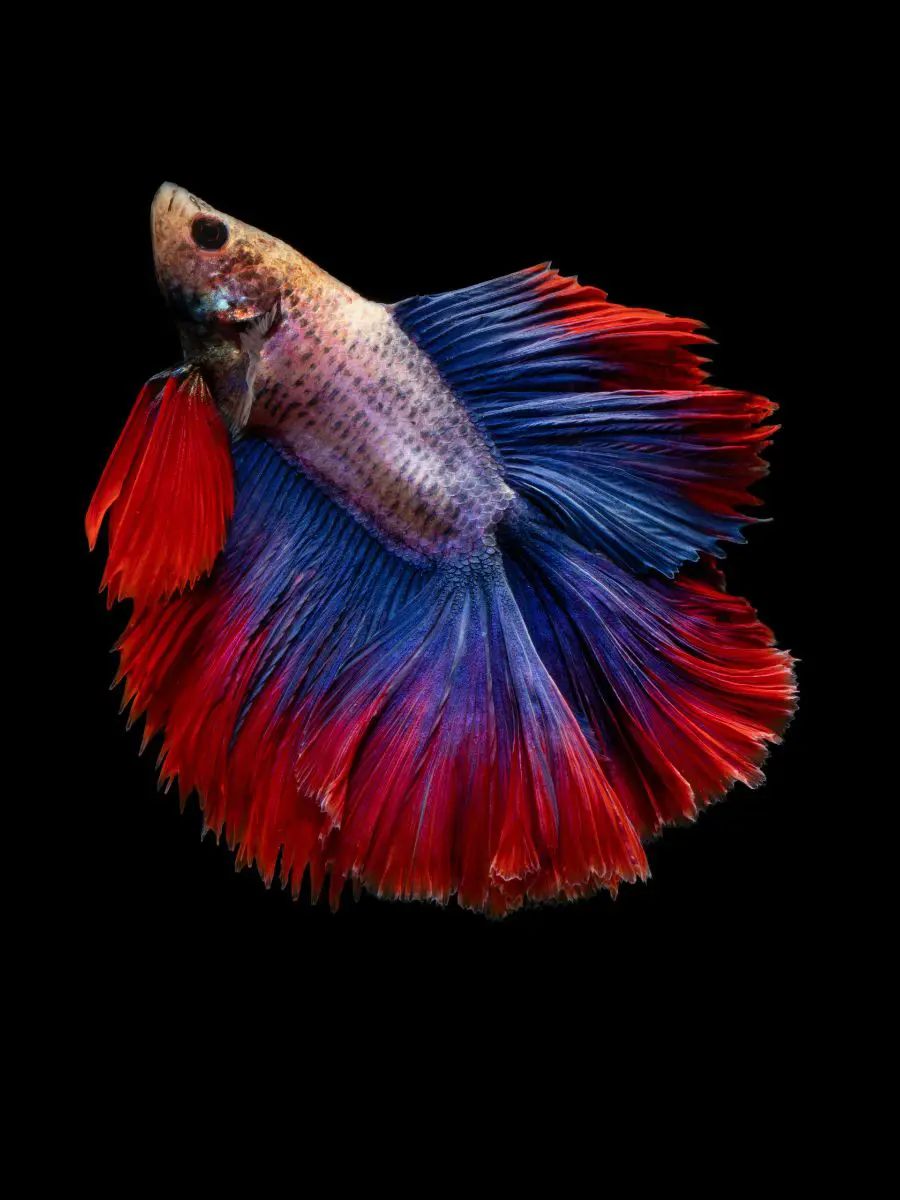
Betta fish are a fiery and popular freshwater species native to Southeast Asia. Notable for its striking appearance, the Betta features long, flowing fins and a variety of colorations, including shades of blue, red, green, and purple.
Males are especially noted for their elaborate fins and bright colors, which are used to attract mates and establish dominance. They are known for their territorial and aggressive behavior, particularly among males, which is why they are often kept alone or with carefully chosen tankmates. While Bettas can survive in smaller tanks or bowls, they thrive best in well-maintained aquariums with proper filtration and regular water changes.
Their diet includes high-quality pellets, live or frozen foods like bloodworms and daphnia.
10. Bumblebee Goby
Bumblebee Goby is a small, charming freshwater fish native to Southeast Asia, distinctly the brackish and freshwater rivers and estuaries of Indonesia and Malaysia. The Bumblebee Goby is a popular choice for aquariums due to its vibrant colors and intriguing behavior.
The species is famed for its obvious tint, which includes alternating black and yellow horizontal stripes reminiscent of a bumblebee, giving the fish its varied demeanor.They are often found in brackish environments in the wild, so they prefer slightly brackish water conditions, although they can adapt to freshwater setups if the conditions are stable.
Bumblebee Gobies are generally peaceful but can be territorial, especially when kept in smaller tanks. Their diet consists of high-quality flakes, pellets, and live or frozen foods such as small worms or water fleas.
11. Cardinal Tetra
Cardinal Tetras is a peaceful, schooling fish that prefers to be kept in groups of at least six to ten individuals. They thrive in well-planted aquariums with a dark base and gloomy lighting, which enhances their vibrant colors.
Famed for its vibrant tint, this small species normally reaches about 1.6 to 2 inches in length. It is eminent by its brilliant red body and a vivid blue stripe that extends from its eye to the base of its adipose fin, creating a stunning visual effect. They are sensitive to water quality, so maintaining stable and clean conditions is crucial for their health.
Their stunning attitude and peaceful nature make them a popular choice for both beginners and experienced aquarists.
12. Fancy Guppies
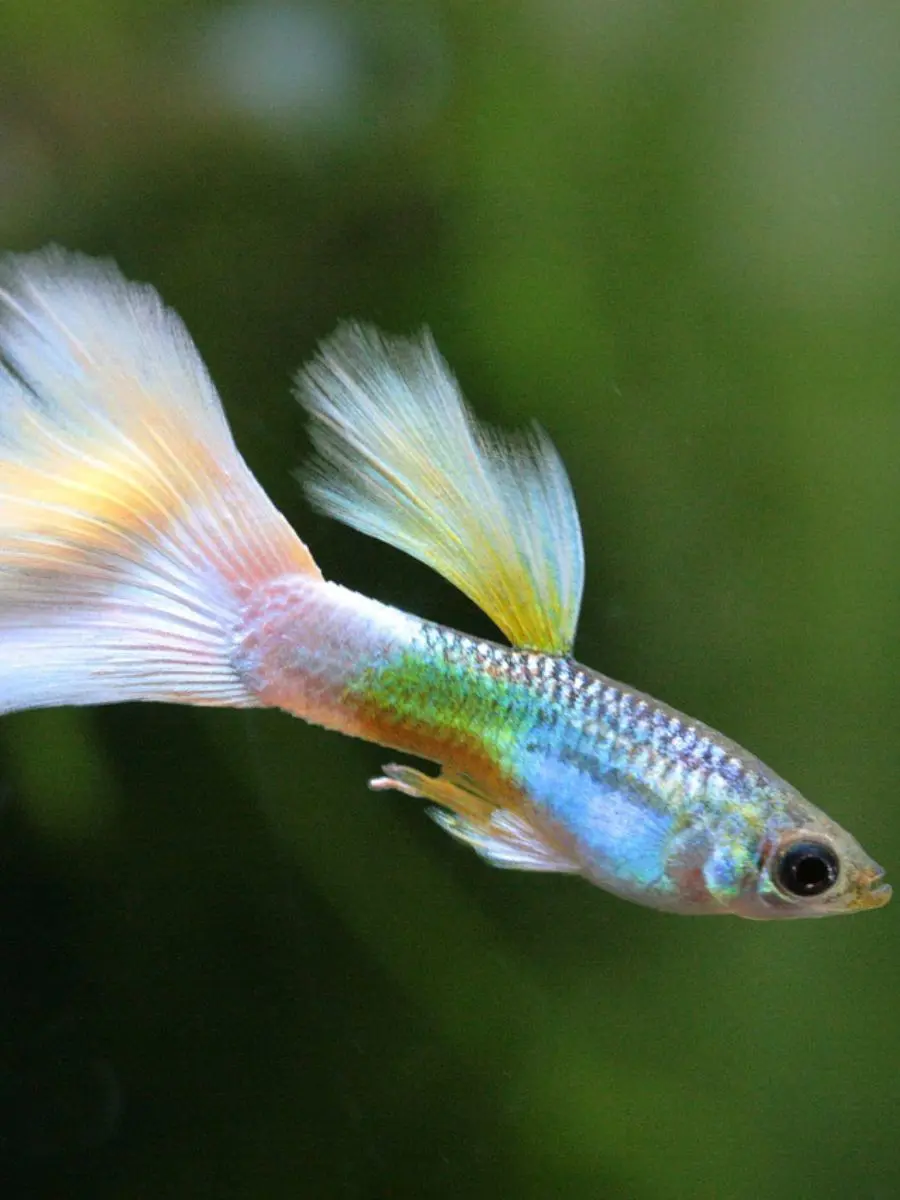
Fancy Guppies are a popular and diverse variety of common guppys, known for their exceptional coloration and fin shapes. Unlike their wild counterparts, fancy guppies have been selectively bred to showcase an array of vibrant colors, patterns, and fin types, including long-flowing tails and elaborate dorsal fins.
Typically, fancy guppies grow to about 2 to 3 in length. They are lifebearers, meaning they give birth to free-swimming fry rather than laying eggs. Their bright colors and dynamic swimming patterns add visual interest to any tank. Fancy guppies are hardy and adaptable, thriving in a variety of water conditions.
Fancy guppies are relatively easy to care for, making them suitable for both beginner and experienced aquarists. Their striking appearance and lively nature make them a colorful addition to community tanks.
13. Asian Stone Catfish
The Asian Stone Catfish is a small freshwater fish native to the rivers and streams of Southeast Asia, distinctly India and Sri Lanka. Recognized for its unique manner, the Asian Stone Catfish commonly grows to about 1.2 to 1.6 inches in length.
It has a distinctive, flattened body covered with small, bony plates that give it a stone-like appearance, which helps it blend into its natural rocky habitat. This catfish is a peaceful and hardy species, making it suitable for community tanks with other small, non-aggressive fish. It prefers well-oxygenated water with a slightly acidic to neutral pH, and temperatures ranging from 72-78°F.
The Asian Stone Catfish is a bottom-dweller that enjoys having plenty of hiding spots and a soft substrate, as it spends much of its time searching for food.
14. Chili Rasbora
Chili Rasbora is easily identified by its striking orange-red body, which is often highlighted with a prominent black stripe extending from its head to the base of the tail. The small and vivid color of the Chili Rasbora makes it an attractive choice for aquarists looking to add a splash of color to their tanks.
Chili Rasboras are peaceful and prefer to be kept in schools of at least six to ten individuals, which helps them feel secure and display their natural schooling behavior. They thrive in well-planted aquariums with gentle water flow and slightly acidic to neutral water conditions. Chili Rasbora ordinarily grows to about 0.8 to 1 inch in length, making it ideal for nano and small aquariums.
Their diet consists of high-quality flakes, micro pellets, and live or frozen foods like daphnia or baby brine shrimp.
15. Apistogramma
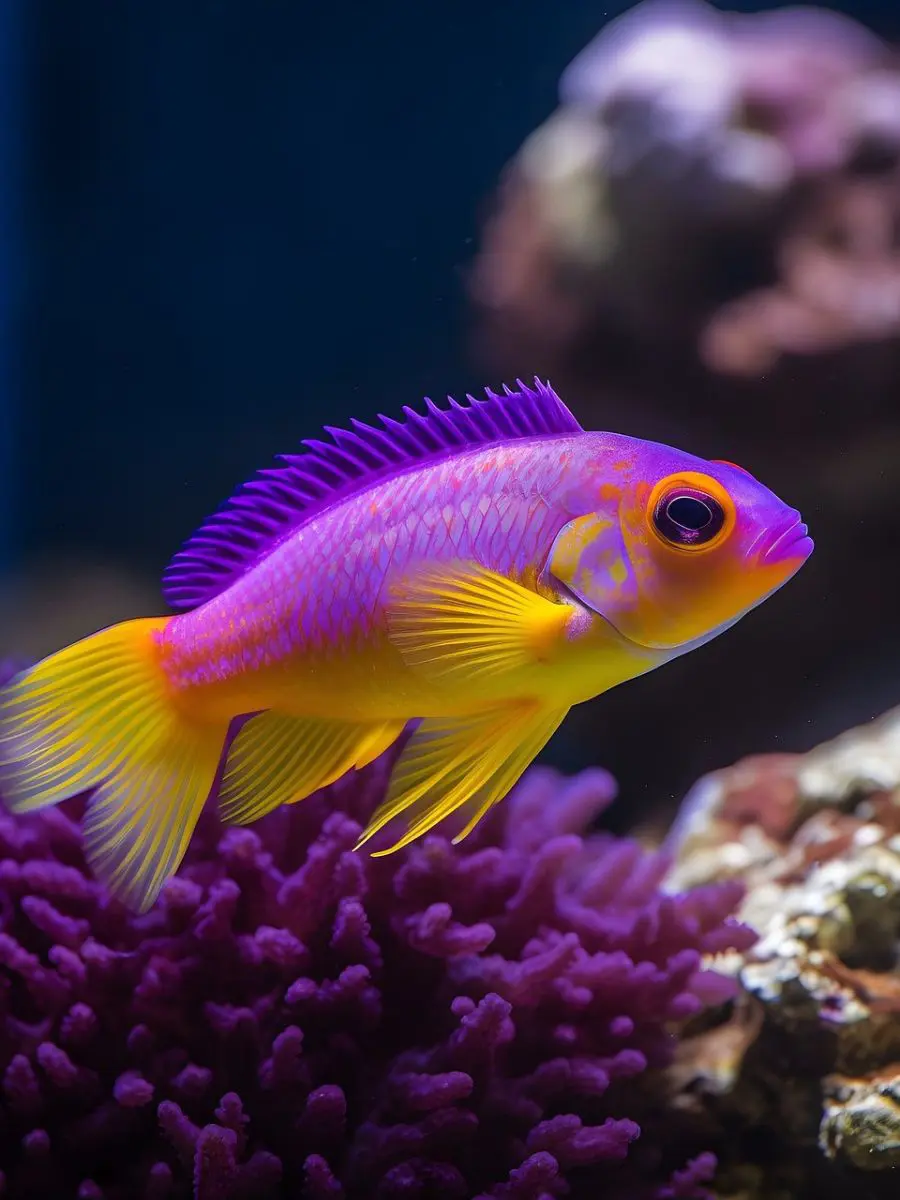
Apistogramma is a genus of small, colorful cichlids native to South America, peculiarly the Amazon Basin. Renowned for their distinct presence and intricate behaviors, apistogramma species are popular among aquarists who appreciate their unique charm and variety.
Apistogramma are known for their territorial and breeding behaviors. They often form monogamous pairs and exhibit fascinating parental care, with both parents taking an active role in caring for their offspring. These fish are generally peaceful but can be aggressive towards their own kind or other species that encroach on their territory, particularly during breeding periods.
Their diet includes high-quality flakes, pellets, and live or frozen foods like worms and daphnia.
Top Lists

